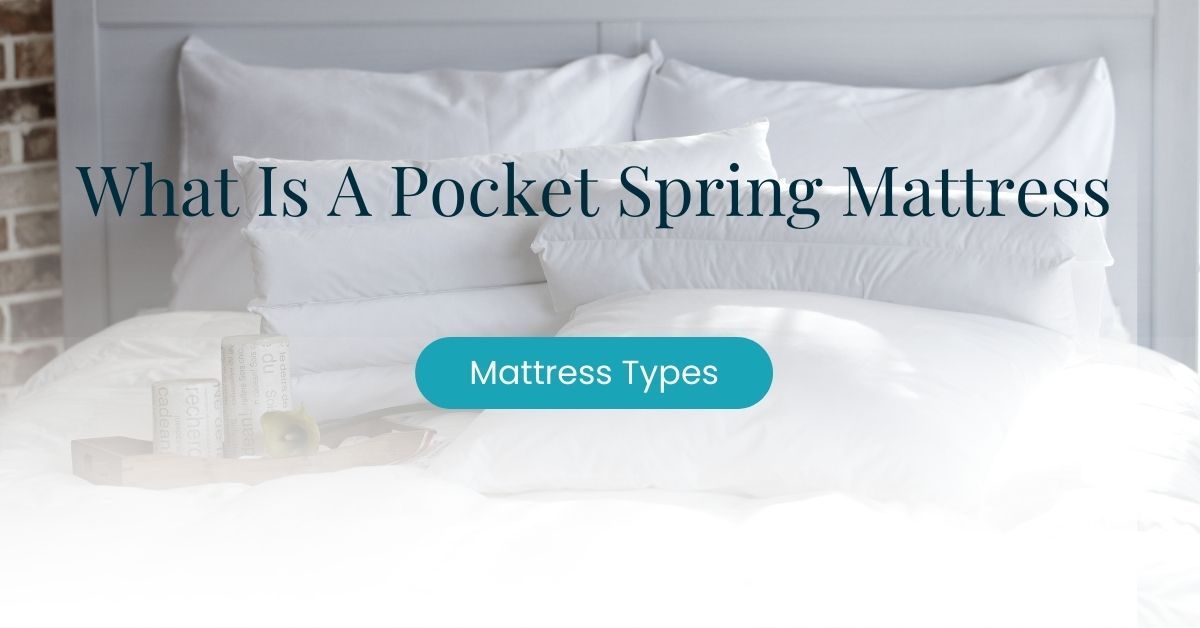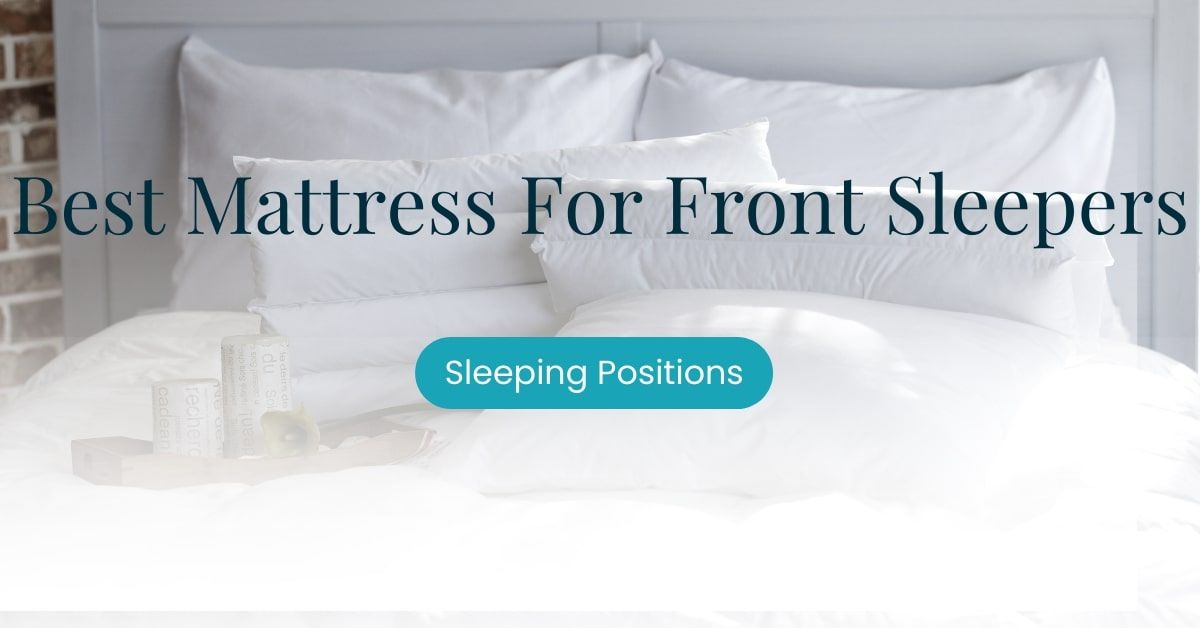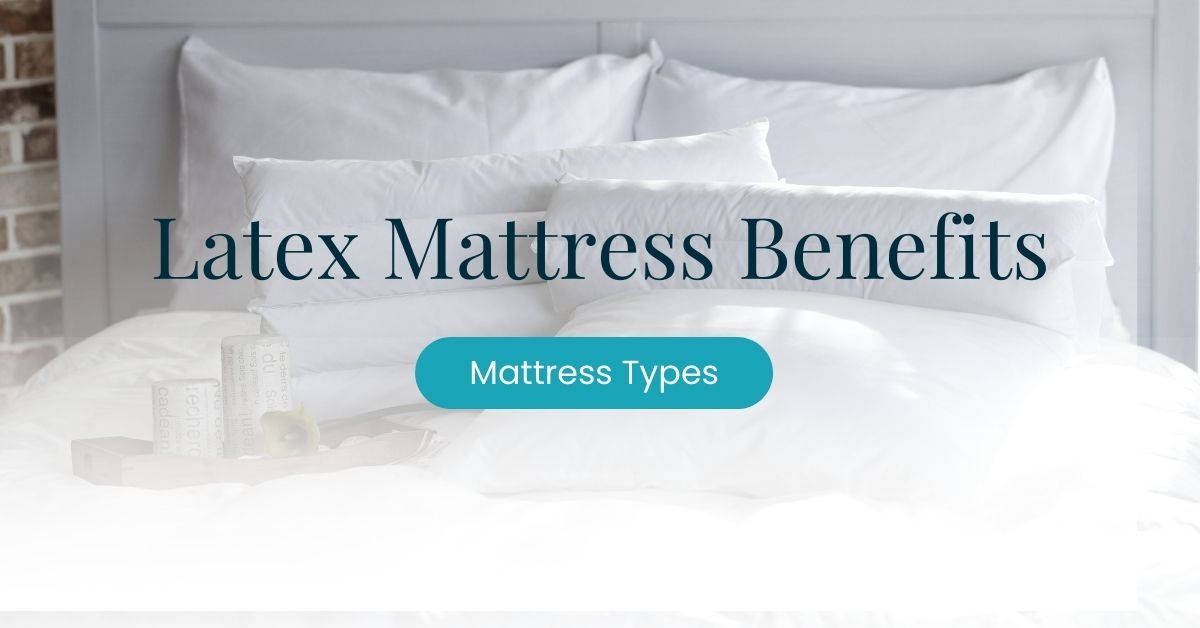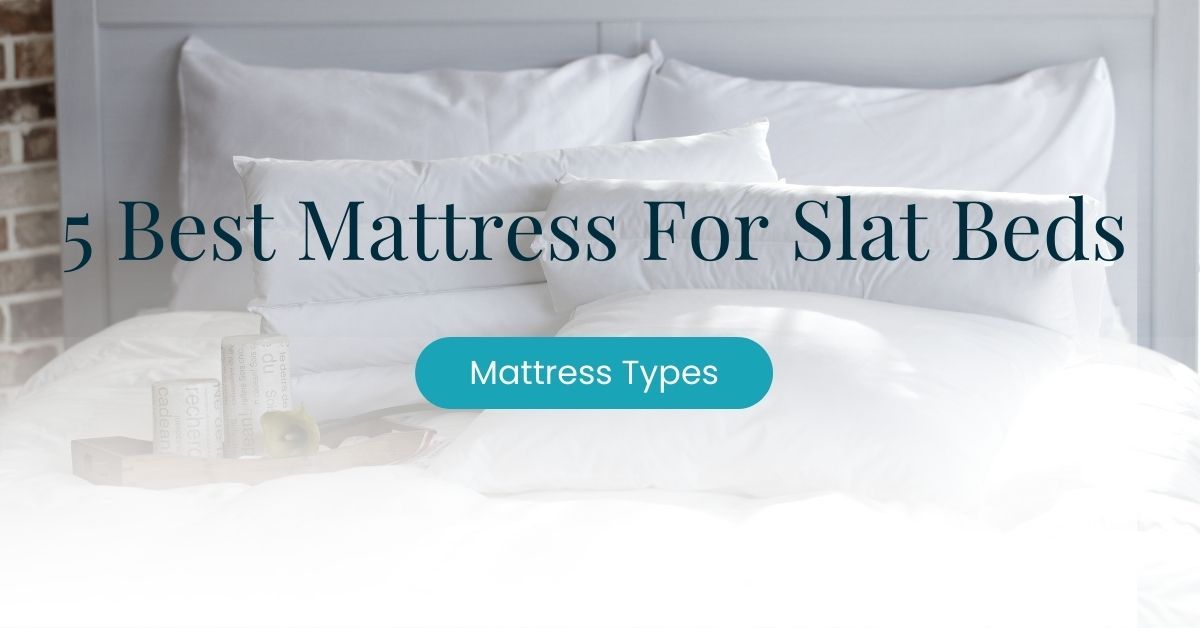A pocket spring mattress is a type of mattress that features smaller, softer springs individually wrapped in fabric pouches and sewn or hand-tied together. Unlike traditional innerspring mattresses, where coils are welded together and move in unison, pocket spring mattresses have separate, independent springs that respond individually to pressure.
This design allows the mattress to conform to the shape of your body, evenly distributing weight across the sleeping surface and providing ample support without roll-togetherthe sensation of feeling your bedmate move and causing you to wake up due to the sinking feeling on the bed.
Overall, pocket spring mattresses offer a comfortable, supportive sleep experience with numerous advantages over traditional coil spring mattresses.
9 Pocket Spring Mattress Advantages
Discover the numerous benefits of pocket spring mattresses, designed to provide exceptional support, comfort, and adaptability for a restful night’s sleep. Explore the following advantages that make these mattresses a popular choice among consumers
- Enhanced body support: Pocketed coils move independently, offering targeted support and stability, while also minimising motion transfer during sleep.
- Consistent comfort: The separate coils ensure a uniform surface without any dead spots, providing consistent firmness or softness across the mattress.
- Pressure relief: The pocketed coils effectively ease pressure on areas such as the neck, shoulders, lower back, pelvis, and behind the knees, promoting a more comfortable sleep.
- Minimised partner disturbance: Independent coils reduce roll-together, supporting each sleeper’s weight without impacting their bedmate.
- Customisable comfort: You can tailor pocket spring mattresses to your preferences by adjusting the number of springs and coils for optimal comfort.
- Premium material options: Some high-end pocket spring models incorporate additional materials, like memory foam, Talalay latex, or wool, offering a luxurious sleep experience.
- Temperature regulation: The gaps between coils encourage airflow, helping maintain a cooler and more comfortable sleeping environment.
- Hybrid benefits: By merging coils with other materials, such as memory foam or latex, hybrid mattresses deliver improved airflow and superior comfort.
- Noise reduction: Individually wrapped coils in pocket spring mattresses typically generate less noise compared to traditional innerspring mattresses, contributing to a quieter sleep setting.
6 Pocket Spring Mattress Disadvantages
While pocket spring mattresses offer numerous benefits, it’s essential to consider some of the potential disadvantages to make an informed decision. Here, we’ll explore the drawbacks that may impact your overall sleep experience:
- Faster wear: Compared to memory foam or latex mattresses, pocket spring mattresses may experience faster wear as the springs can lose their flexibility and ability to support consistent weight and pressure over time.
- Sagging issues: Unlike memory foam or latex mattresses, pocket spring mattresses can develop sagging areas where springs become overly compressed and fail to regain their original shape, leading to discomfort and an uneven sleeping surface.
- Weight and setup: Containing a multitude of coils and springs, pocket spring mattresses are often heavier than their memory foam or latex counterparts, making them more difficult to move, manoeuvre, and set up.
- Allergy concerns: Unlike some memory foam or latex mattresses made from hypoallergenic materials, certain pocket spring mattresses may use materials that trigger allergies or asthma. To mitigate this risk, clean the mattress regularly.
- Motion isolation limitations: While pocket spring mattresses offer improved motion isolation compared to traditional innerspring mattresses, they may not provide the same level of motion absorption as memory foam or latex mattresses, which can be especially important for light sleepers or those with restless partners.
- Coil inconsistencies: The quality of coils can vary significantly between manufacturers and models, impacting overall comfort and longevity. For instance, a Silentnight pocket spring mattress may use different quality coils compared to a Rest Assured model. This variability contrasts with memory foam, where differences primarily lie in density levels rather than quality.
Types of Coils Used in Spring Mattresses
Different manufacturers use different coils for their pocket spring mattresses. The 3 most common coils used in pocket spring production are:
- Continuous coils – constructed using a single wire and then shaped into a helical structure. Much like the suspension coils you see on cars.
- Bonnell coils – constructed in an hourglass shape where the upper part supports weak pressure, while the bottom part supports greater pressures.
- Offset coils – combination of continuous and Bonnell coils; it resembles a helix and an hourglass shape. The main difference is that offset coils have squared tops compared to a Bonnell.
Exploring Pocket Spring Arrangements for Optimal Mattress Performance
When it comes to pocket sprung mattresses, various pocket spring arrangements play a crucial role in determining overall performance and comfort. In this section, we’ll delve into the three main arrangements – zoned, nested, and honeycomb pocket springs – and discuss their unique benefits and features.
Zoned Pocket Springs
Zoned pocket springs are designed to offer targeted support and pressure relief. These springs are strategically placed in specific areas of the mattress, with varying firmness levels to provide the right amount of support to different body parts, such as the head, shoulders, hips, and legs.
This tailored approach ensures a comfortable and restful sleep for people with specific health concerns, such as arthritis, sciatica, or lower back pain, as well as catering to individual sleep preferences like side, back, or stomach sleeping positions.
Nested Pocket Springs
Nested pocket springs are another popular arrangement, providing consistent support and pressure relief across the entire mattress surface. Organised in a grid-like pattern, each spring is closely positioned to its neighbours, resulting in minimal motion transfer and a stable sleeping surface.
Nested pocket springs are suitable for those who value even support throughout the mattress, which can be beneficial for individuals with back pain or sleepers who tend to toss and turn during the night.
Honeycomb Pocket Springs
Honeycomb pocket springs feature a unique hexagonal arrangement, optimising the use of space and reducing gaps between springs. This design enhances support, pressure relief, and overall mattress durability by distributing weight more evenly and reducing wear on individual springs.
Honeycomb pocket springs are ideal for sleepers who require consistent support across the mattress, regardless of sleep position or body type.
Comparing the Arrangements
| Arrangement | Support | Pressure Relief | Side Sleepers | Back Sleepers | Stomach Sleepers |
|---|---|---|---|---|---|
| Zoned | Targeted support | Targeted pressure relief | Good for shoulder and hip relief | Good for lumbar support | May vary depending on the zoning |
| Nested | Consistent support | Even pressure relief | Suitable | Suitable | Suitable |
| Honeycomb | Even support | Consistent pressure relief | Suitable | Suitable | Suitable |
Pocket Spring vs Coil Spring – Which One Wins?
Coil spring mattresses have coils welded together in one solid piece. On paper, this all looks super durable and comfortable, but this is not the case.
As coils are welded together inside the coil spring mattress, all coils respond together according to the applied weight and pressure of the user which is good if only one person is using the bed.
The bad side comes if you have a partner in bed as any sudden movements of your bedmate will trigger roll-together and will likely disturb you and vice-versa.
If you want independently-suited comfort for the two of you, a pocket spring mattress is the most suitable for you as it provides more comfort.
So in this case, pocket spring wins.
Are Pocket Spring Mattresses Firm?
They are available in a variety of firmness levels, from soft to extra firm. The thickness (gauge) of the wire used in the springs plays a significant role in determining a mattress’s firmness. A higher gauge wire creates a softer mattress, while a lower gauge wire produces a firmer one.
You should select the right firmness based on your body weight, not just personal preference. If your mattress is too soft, it might lead to misalignment and discomfort during sleep. On the other hand, if it’s too firm, you could experience painful pressure points, especially in areas where your body weight is most concentrated, like the shoulders and hips.
Ideally, a mattress with the proper firmness should mould to your body shape, ensuring that your spine remains aligned and receives the right support. To give you a better idea of which spring tension to choose based on your body weight, take a look at these general guidelines:
| Weight | Tension |
|---|---|
| Up to 70 kg | Soft |
| 70 to 102 kg | Medium |
| 102 to 127 kg | Firm |
| Above 127 kg | Extra firm |
Keep in mind that these values might differ slightly depending on the mattress manufacturer and specific model.
For those of you who share a bed with a partner and have different body weights or firmness preferences, don’t worry! Some pocket spring mattresses offer a dual-firmness option, so both you and your partner can enjoy a comfortable and supportive sleep tailored to your individual needs.
- John Lewis & Partners: Known for their high-quality products, John Lewis & Partners offers a range of pocket spring mattresses with varying firmness levels on each side. Their ‘Natural Collection’ mattresses are an excellent example, providing customised support and comfort for both you and your partner.
- Harrison Spinks: As a renowned British manufacturer of luxury beds and mattresses, Harrison Spinks offers customisable pocket spring mattresses with different spring tensions on each side. Their ‘Somnus’ range, for instance, allows you to choose distinct firmness levels to accommodate both you and your partner’s individual preferences.
How Long Do Pocket Spring Mattresses Last?
Pocket spring mattresses typically last between 8-10 years. Cheaper models may last shorter and premium ones may well be capable enough to last beyond 10 years.
The lifespan of pocket spring mattresses depends on several important factors such as:
- production quality
- how well it’s cared for
- how often it’s used
- quality of the materials used
If you bought a premium model, taking care of it and not using it more often than you need will extend its lifespan and even soar beyond its warranty and 10-year period.
But how do you properly care for a pocket spring mattress? Continue reading down below.
Memory Foam vs Pocket Spring – Which Wins?
A great mattress powerhouse, memory foam mattresses are quite popular as pocket springs. But which wins if we compare them side by side?
As for comfort, the pocket spring leans toward the firm side, while the memory foam leans towards the soft side because of its body contouring features.
It’s great to note that while pocket spring has low motion transfer (or the roll-together as we call it), memory foam has lower motion transfer since it contours to your body shape.
The great advantage pocket spring has is temperature control since pocket springs have good airflow inside compared to solid foam from a memory foam mattress.
Durability-wise, pocket springs are prone to premature wear and tear as the coils get compressed over time, leading to sagging. Memory foam has a solid foam core resistant to pressure giving you more durability, but it can absorb contaminants quicker.
Verdict: a close call, but memory foam wins.
Discovering the Best Base for Your Pocket Spring Mattress
When searching for the best base for your pocket spring mattress, it’s essential to consider compatibility and support. A well-matched base can extend your mattress’s lifespan and enhance its overall comfort. Generally, there are three main types of bases suitable for pocket spring mattresses:
- Divan bases: These upholstered, box-style bases offer a sturdy and stable foundation, making them an excellent option for pocket spring mattresses. Some divan bases even come with built-in storage, adding practicality to your bedroom. Popular UK options include the Silentnight Ottoman Divan Base and the John Lewis & Partners Classic Divan Base.
- Slatted bases: A popular choice, slatted bases provide good airflow and support for pocket spring mattresses. Opt for a base with evenly spaced slats, no more than 7cm apart, to ensure proper weight distribution and prevent sagging. UK examples of slatted bases are the IKEA LURÖY Slatted Bed Base and the Dreams Newark Wood Slatted Bed Frame.
- Sprung slatted bases: These bases feature curved slats that adjust to your body weight, offering additional support and pressure relief. They work well with pocket spring mattresses, complementing their responsive nature. The White Company Pimlico Sprung-Slat Bed Base is a good choice.
Remember, selecting the right base for your pocket spring mattress can make a significant difference in the overall sleeping experience, so take the time to weigh the pros and cons of each option.
Is A Pocket Spring Mattress A Good Buy?
Generally, pocket spring mattresses are considered a good buy. However, to determine if a pocket spring mattress is the right choice for you, consider the following factors that can affect your satisfaction:
- Temperature regulation: Pocket spring mattresses provide excellent airflow, making them an attractive option for those who tend to sleep hot.
- Sleeping with a partner: While they offer better edge support, meaning more surface area for sleeping partners, motion isolation may not be as effective as with memory foam or latex mattresses.
- Body weight: A mattress with more springs or a higher spring gauge may be better suited for heavier individuals, whereas a lower spring count or gauge could be more comfortable for lighter sleepers.
- Sleeping position: These mattresses can provide tailored support for side, back, and stomach sleepers, but choose a model with the appropriate firmness level for your specific needs.
- Medical conditions: For those with joint or muscle pain, pocket spring mattresses can offer targeted pressure relief. However, select a mattress that aligns with your specific health needs.
- Budget: Pocket spring mattresses are available in a wide range of prices. It’s important to choose a mattress that matches your comfort preferences while remaining within your budget.
Remember, mattresses are not a one-size-fits-all solution. Take your personal preferences and circumstances into account when determining if a pocket spring mattress is a good buy for you.






